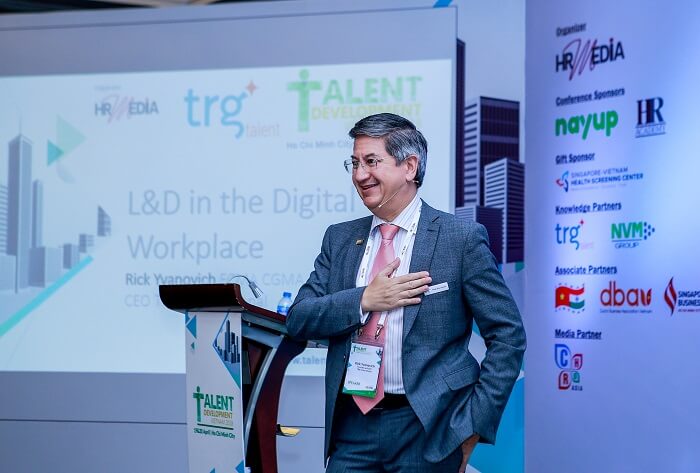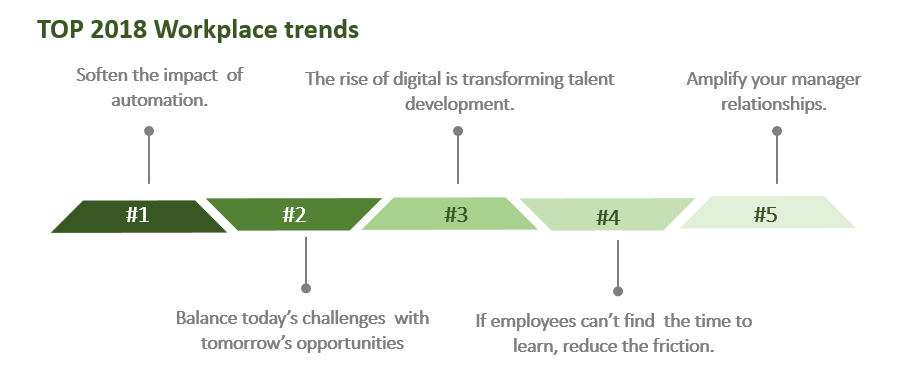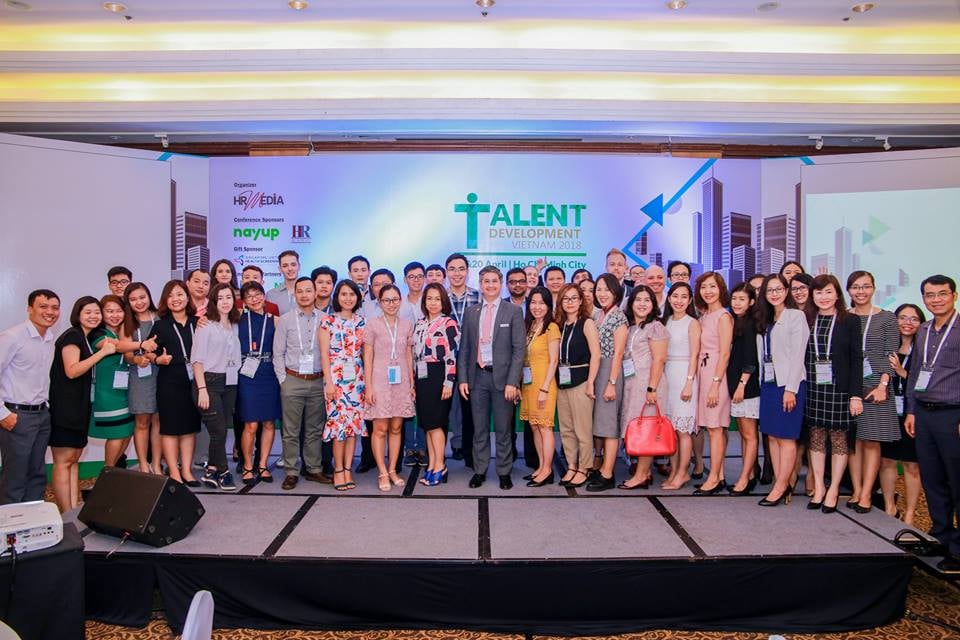On 19th April 2018, TRG International was honoured to attend the Talent Development 2018 as a media partner as well as a knowledge partner. In this event, TRG was also given the opportunity to present about L&D (Learning and Development) in the Digital Workplace. The presentation was done by Mr. Rick Yvanovich – Founder and CEO of TRG International.
Read more: Development - This is not an event...it's a Journey

At the beginning of the presentation, Rick gave participants a comprehensive definition of Digital Workplace. According to Rick, Digital Workplace can be seen as a concept that describes how technology is increasingly creating a virtual equivalent of the physical workplace, and how that trend allows businesses to rethink traditional processes and increase efficiency. And because we are all living in the digital world, a shift from physical to digital workplace also means a shift in L&D implementation as known as L&D in the Digital Workplace
Read more: What Should Be Included in Your Employee’s Development Plan?

Drawing from these trends, Rick came up with the top challenges for L&D these days, including the following factors.
1. Are employees really interested in learning?
The modern organisation needs to meet learners where they already are - aligning development opportunities with employee aspirations, and engaging them through the platforms where they are already spending their time.
Many companies are facing a challenge to get employees to make time for learning. But employees are not ignorant to learning, they simply haven’t been motivated the right way. 94% of them would stay at a company longer if it invested in their career development. Therefore, the job of an L&D person is, through communication and learning experience designing, showing the employees how they would benefit from the company’s learning programmes in terms of personal development.
2. What’s more important to learn: Soft or Hard skills?
When the workplace is digitalised, some of the works might be completed with machines and other automated tools. Apparently, learning hard skills to be able to control such assistance is important but according to a research by McKinsey, gradually, people in the future workplace will spend more time on activities that machines are less capable of such as managing people, applying expertise, and communicating with others. The skills and capabilities required will also shift towards social and emotional skills and more advanced cognitive capabilities, such as logical reasoning and creativity.
But the decision on what to learn is not simply taking orders from employees and/or managers and executives. Instead, L&D people need to identify the real training needs. It’s the Training Need Analysis you might usually conduct in your company but in a digital workplace where data plays a vital role in operation management, you should take into consideration not only the business objectives, their alignment with employees’ career goals, but also the trends, the tendencies and the preferences of the employees in YOUR company to create a solution to reach the ultimate goal which is the win-win result for both company and employees.
Read more: Must-Have Qualities of Leading Employers
3. How to ensure the optimal learning experience to keep employee’s motivation?
58% employees want to learn at their own pace and 48% of employees prefer to learn at the point they need, therefore, bite-sized learning content which is always ready and available is at the top preference of employees. This result proves the tendency of employees to incline towards the informal learning size as it is more time-saving and handy for them and also cost-saving for the company.
TRG, for example, uses Udemy, an online learning portal with short courses from 1 to maximum 10 hours of video and reading materials. With a variety of business-related topics from general skills like how to make an attractive PowerPoint presentation, how to use Excel, to specific knowledge and skills, we are able to conduct just in time learning whenever the need to learning something rises for each employee. The bite-sized videos also make the learning experience pleasant and convenient for the employees to grab the key points and put into practice right afterwards.
But it doesn’t mean it’s the end of traditional training method like instructor-led classrooms. Depending on the learning content, training method differs. On one hand, the organisation surely doesn’t want the employees to self-study about your products without any instruction. But on the other hand, they also don’t want to repeat a class about their company’s core values every time they have newcomers.
Therefore, traditional training method still has its own position in the digital workplace and company are still planning on their budget for both. What matters is how you balance two types of learning.
Read more: Blurring Your Employee’s Skill Gaps and Unlock Their Potential

Last but not least, Rick emphasized the role of manager relationship. The fact is Manager involvement is a critical ingredient to increase employee engagement with learning and the learning attitude of employees is somewhat influenced by the attitude of the managers towards learning. 56% of employees say that they would spend more time learning if their manager suggested a course to improve skills. The manager, according to the employees, is more experienced and knowledgeable hence, the suggestions and/or encouragement for employees to learn something is valuable.
Read more: [Infographic] 5 Reasons Why Talent Management Solutions Are Needed
Never miss an event like this again! Simply subscribe to our blog or by clicking the below link to always stay updated!
 English
English  Vietnamese
Vietnamese 

